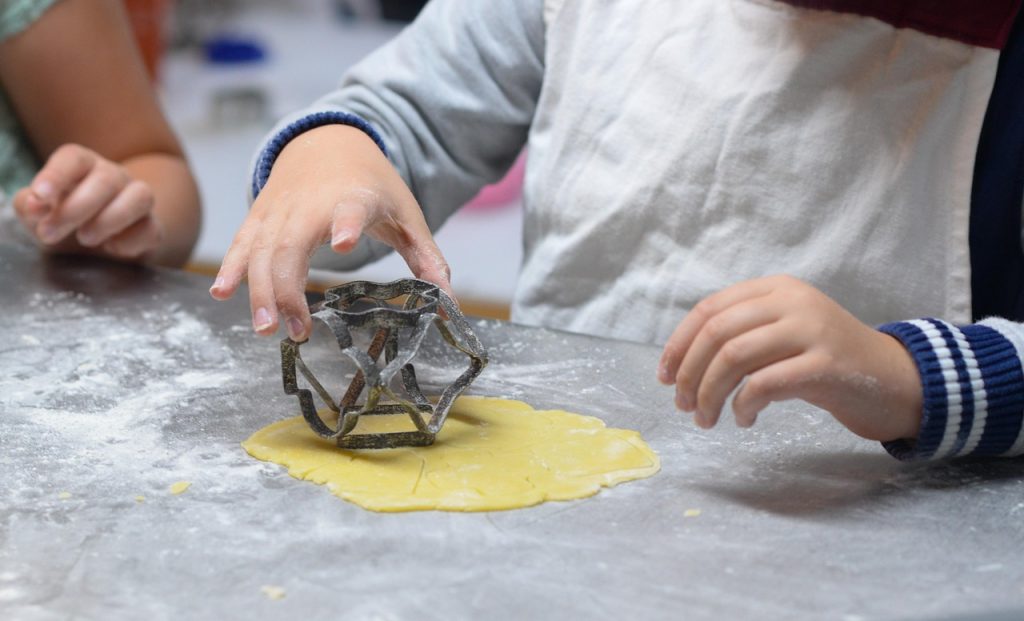The holiday season is full of excitement, sparkling lights, family gatherings, and endless to-do lists. Between decorating, shopping, and attending events, it’s easy for schedules to get hectic and tempers to run short. Children can feel this rush too, often becoming overwhelmed by all the changes and expectations. That’s why understanding how to teach kids patience becomes especially valuable during this time.
Helping kids slow down, manage emotions, and learn to wait allows them to enjoy the season more fully. Using simple patience teaching strategies also reminds adults to model calmness and understanding, creating a more peaceful and joyful holiday experience for the whole family.
Understanding What Patience Really Means
Patience isn’t just about waiting quietly; it’s about managing emotions while waiting. For young children, that can mean learning to stay calm when things don’t happen right away or when plans change. Patience helps them build self-control and flexibility, two important life skills that take time to develop.
During the holidays, there are many chances to practice child patience. Maybe it’s waiting for cookies to bake, taking turns opening gifts, or sitting through a long family dinner. These everyday moments show children that waiting can be worth it and that good things often take time.

Common Triggers That Test Patience During the Holidays
Even the most joyful season can bring moments that challenge everyone’s ability to wait patiently. Long lines at the store, crowded events, and unexpected delays can quickly lead to frustration. Children, who thrive on routine, may feel especially unsettled when their days look different from usual. Add in excitement, sugar, and extra noise, and it’s easy for little ones to feel overwhelmed.
Parents feel the pressure too. Balancing gatherings, work responsibilities, and holiday errands can make it tough to stay calm. When both parents and kids are feeling stressed, it’s important to pause and remember that patience is something we’re all developing; it’s truly part of developing the ability to cope with busy or unpredictable moments.
Practical Ways to Teach Patience to Kids
Teaching your child patience starts with clear expectations and familiar routines. When kids know what’s coming, like when it’s time to open presents or visit family, they feel more secure and can wait patiently with less stress. A countdown calendar or simple daily schedule can help.
Stories and role play are powerful tools for teaching patience. Reading books about waiting or sharing can lead to great conversations. Acting out everyday scenarios, like waiting in line or taking turns, gives children the confidence to practice calm behavior.
Mindfulness is another helpful strategy. Deep breaths, quiet moments, and simple gratitude exercises help children stay grounded when holiday excitement starts building. Over time, these habits support developing patience in meaningful ways.
Creating Calm Holiday Moments
The best holiday memories often come from slow, simple activities. Baking cookies, doing crafts, or reading together provide kids with time to focus and unwind, making them perfect opportunities for practicing patient waiting. These calm moments help children relax while also reinforcing the joy of taking time to slow down.
It’s equally important to protect rest time. Cozy bedtime stories, quiet breaks, or peaceful walks outside help children manage their emotions and avoid overwhelm.
Modeling Patience as a Parent or Teacher
Children learn a great deal from observing adults. When parents handle long lines, traffic, or last-minute changes with patience, they provide a real-life example of how to stay calm. Taking deep breaths, speaking gently, and showing flexibility all send powerful, positive messages.
If a child becomes frustrated, adults can turn the moment into a learning opportunity by explaining their own strategies or guiding the child through a calmer response. This kind of modeling supports children’s patience and strengthens emotional skills.

Celebrating Progress and Kindness
Recognizing and praising moments when children show patience helps reinforce the habit. Simple encouragement like “I’m proud of how you waited your turn” helps kids feel seen and motivates them to keep practicing.
Calming traditions, like a gratitude moment, a shared craft, or a quiet morning together, help kids understand that patience is part of meaningful holiday experiences. These rituals also help kids avoid relying on instant gratification and instead appreciate the slower, more thoughtful moments of the season.
Teaching Patience Questions
How can I make patience a fun concept for kids?
Turn waiting into a game! Use timers, countdowns, or “patience challenges” where children earn small rewards for staying calm. Storytelling and role play can also make learning patience playful and engaging.
What do I do when my child loses patience in public?
Stay calm and acknowledge their feelings. Offer simple strategies like taking deep breaths or counting to ten. Redirecting attention to something positive or engaging can help them regain control without turning the moment into a power struggle.
How can I stay patient when holiday plans don’t go as expected?
Remind yourself that flexibility is part of the season. Take a few deep breaths, focus on what’s going well, and model calm behavior for your child. Humor and perspective can also make unexpected changes easier to handle.
Are there games that help children learn patience?
Yes! Board games, card games, and turn-taking activities all teach kids to wait their turn and follow rules. Simple waiting games, like “Red Light, Green Light” or “Simon Says,” are fun ways to practice self-control.
How do I encourage older kids to set a good example for younger ones?
Invite older children to help guide or teach younger siblings during calm activities. Praise their leadership and patience, and explain how their actions influence younger children. This not only reinforces patience in older kids but also strengthens family bonds.
Keeping the Joy in the Holidays
The holiday season can be exciting but also overwhelming for both children and adults. By understanding what patience really means, recognizing common triggers, and practicing patience, families can create calmer, more joyful holiday experiences.
Simple activities, mindful moments, and positive reinforcement all help children learn this important skill while strengthening family bonds.
As a private preschool in Willis, TX, we focus on helping children develop social and emotional skills, including patience, through everyday learning experiences. Families can see how intentional guidance and supportive routines make a difference in children’s ability to navigate busy, exciting times.
Ready to help your child build patience this holiday season? Contact us today and discover activities and strategies tailored to your family’s needs.







